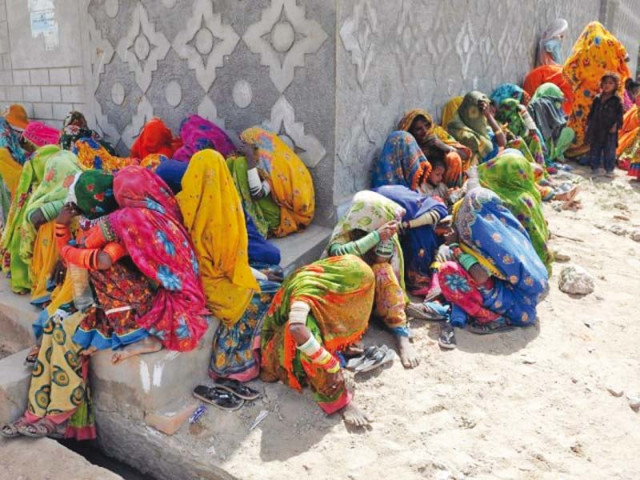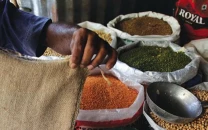Mysterious suicide cases on the rise in Sindh’s Tharparkar district
Desert area emerged as the district with the highest number of reported suicide cases between 2016 and 2020

The mysterious increase has been witnessed in suicide cases across Sindh’s Tharparkar district as shocking 115 persons took their own life in 2021, including 68 women in the desert area of the province.
In one such case, Chaman Lal, a resident of Mithi town of Tharparkar, received a call from home that his youngest sister, 20-year-old Babita, was missing, according to a report compiled by Al Jazeera.
Chaman, who is in his thirties, worked in the city of Hyderabad as a cashier at a gas station, but home was the desert town of Mithi, 322km and a four-hour bus ride away. He rushed back.
Meanwhile, in Diplo, 40km southwest of Mithi, Chaman’s other sister, 29-year-old Guddi, woke up to find that her husband Doongar hadn’t come home all night.
He worked in Mithi for an NGO supporting orphans and widows. He owned his own motorcycle, a source of pride for the family, and commuted by it daily.
It was noon by the time Chaman reached Mithi. By then, Babita and Doongar had been located and confirmed dead, their bodies found in an empty house at the edge of town, hanging by a single rope from a ceiling fan.
Despite the family’s insistence on foul play and the emergence of jarring details — the house belonged to a local policeman; according to the family, Babita and Doongar barely ever interacted — the police ruled it a joint suicide.
Babita and Doongar’s deaths were, according to police records, the 112th and 113th suicides in 2020 in Tharparkar district where Mithi is located. That year saw the highest annual figures recorded in the desert region.
Quantitative data is tricky in a country like Pakistan, however, especially when it comes to suicide, which remains a criminal offence with attempts punishable by imprisonment and fines. Pakistan does not compile national suicide statistics, but the World Health Organisation (WHO) estimates the suicide rate in Pakistan to be 8.9 deaths per 100,000 people, slightly below the global average of nine.
Also read: Tharparkar: Sindh’s suicide capital in 2021
Last year, the mental health authority in Sindh concluded a five-year study of suicides in which Tharparkar emerged as the district with the highest number of reported cases between 2016 and 2020 — even though it has a population of 1.65 million, much lower than other districts in Sindh, including the seven that comprise the metropolis of Karachi.
The report counts 79 cases of suicide in Tharparkar in 2020 and does not list numbers for previous years. Despite this, the district has the highest number of cases over the five-year period. Local police records indicate well over a hundred suicides in 2020.
Statistics, therefore, provide only a sliver of insight into suicide in Pakistan — especially in Tharparkar, among the country’s least-developed districts.
Locals, however, have many stories. Less than a year after Babita’s death, two streets away from where she lived, a shopkeeper’s son-in-law died by suicide.
Across the road from where he lived, in the new settlements atop the old sand dune by the new Mithi bypass, another young man, 22, did too. A month later, his next-door neighbour, a schoolgirl, 17, also died by suicide. In an older neighbourhood of Mithi, a businessman whispered news of a friend’s son’s death by suicide. Further away, in the town of Chachro, near the Indian border, a young father threw his three sons — aged four, three, and three months — into an empty well, then jumped in after them.
The stories don’t end, but they do have a beginning. “I remember just one incident from when I was younger, about a woman in Mithi who flung herself into a well,” recalled one mother, whose grown son took his own life three years ago. When she was a girl, the cases were rare enough that each incident stood out, a story unto itself.
Now, however, it isn’t uncommon to hear of one every other week, to see photos of bodies circulating on Facebook and WhatsApp. When asked if she remembered when this started, the woman was unequivocal. “All these deaths, we only began hearing of the seven, eight years ago.”
Read full report here



















COMMENTS
Comments are moderated and generally will be posted if they are on-topic and not abusive.
For more information, please see our Comments FAQ